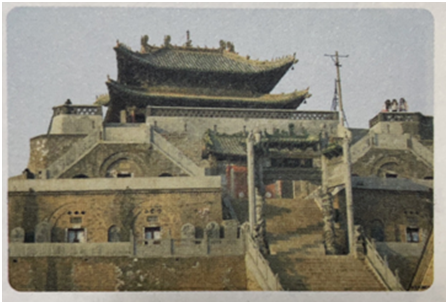申报地区:宜阳县2012年 02月第2批

庙会,又称“庙市”,在我国境内广为流传,也是中国典型的民间集市贸易形式,其形成与发展和民间信仰活动有关,并在规定的日期与场所举行。
福昌庙会俗称“福昌会”,是由民间福昌阁赛神活动演变而成,流行于以宜阳韩城为中心的广大地区,每年农历三月初一至初五为会期,其中三月初三最为兴盛。
福昌阁位于宜阳城西30公里洛河北岸福昌村,现存建筑始于明代,清嘉庆二十四年(1819年)全面修葺。庙会起源于唐,兴盛于明清,古装戏有伍子胥保娘娘到福昌图还愿的故事。《隋书地理志》记载:“宜阳有福昌宫”,唐武德二年更宜阳置福昌县。其主要内容为赛神、美食、民俗表演、民间商贸等内容。福昌庙会以社为单位组织活动,分东社、西社、南社、北社和坐社五大社,各社负责人称为社头,社头一般由具有社会影响的人担任,负责大会的筹划和管理,如上社的时间、路线与规模等。清代《福昌阁赛神记》碑刻载:“四方之社以次进”,形象描述了庙会赛神的盛况。会期,各大社出动响器、狮子
高跷、唢呐等社火表演,场面宏大,形成以民间信仰为内涵的集传统饮食、民间商贸、民俗汇演为一体的传统盛会。
福昌庙会是具有世俗性、群众性、娱乐性特点的地方民俗活动,具有较高的民俗学和历史文化研究价值,为洛阳地方文化及民俗文化的研究提供了具体生动的参考资料。
Temple fairs, also known as "temple markets", are widely circulated and are also a typical form of folk fair trade in our country. Their formation is related to development and folk belief activities, and they are held on specified dates and places. The Fuchang Temple Fair, commonly known as Fuchang Fair, evolved from the folk Fuchang Pavilion event, popular in the vast area centered on Yiyang Hancheng. The Fuchang Fair is held from the first to the fifth day of the third month of the lunar calendar every year, and the third day of March is the most prosperous, Fuchang Pavilion is located in Fuchang Village on the north bank of Luohe River, 30 kilometers west of Yiyang County. The existing buildings began in the Ming Dynasty and were fully restored in the 24th year of Jiaqing in Qing Dynasty (1819). The temple fair originated in the Tang Dynasty and prospered in the Ming and Qing Dynasties. It is said that Wu Zixu once protected the imperial concubine went to Fuchang pavilion to burn incense and make vows. The scene of Fuchang Fair was grand, forming a traditional event with folk beliefs as a connotation of traditional food, folk commerce, and folk customs. The uchang Temple Fair is a local folklore event with secular, mass, and entertaining features. It has a high value for folklore and historical and cultural research. It provides specific and vivid reference materials for the study of Luoyang local culture and folklore culture.
